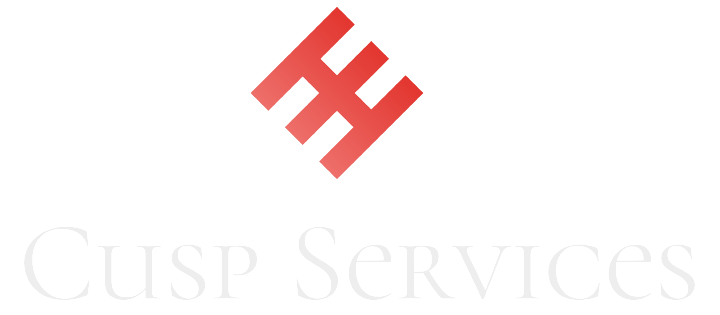Let’s learn and get inspired from such best-in-class companies and implement effective strategies to drive sales and effectively grow your brand. You will also discover the best practices that you can follow to leverage your competitive advantage and effectively scale your brand.
In the last two articles of our 4-part series ‘Competitive Advantage’, we talked about the definition and significance of this advantage; and building a winning competitive strategy.
Competitive Advantage Examples
Different global brands leverage different competitive advantages to scale their businesses and defend their market dominance. Some examples from the world’s top brands include:
Google’s competitive advantage lies in improving web search. Its early PageRank algorithm leveraged site relevance- the number of times other sites linked a particular website to them. This disrupted the earlier site ranking algorithms that prioritized only keywords.
With this, Google quickly became the world’s most popular search engine, with over 8.5 billion searches made per day. It gathered sizable data to build valuable advertising and provide personalized results to the users. Over time it leveraged this brand positioning to dominate other segments like mail service, cloud storage, YouTube, and much more.
Amazon
Amazon has numerous competitive advantages. Among them, the prominent ones are its scale and aggregation – which led to the network effect advantage. It learned early on that having more sellers and customers in its network would lead to negotiating power with the vendors & it could increasingly offer lower prices for its products & services.
Lower prices attracted more customers, which in turn attracted more sellers. It led to a wider range of selection and prices, which again attracted more customers, and so on. This clever strategy has enabled Amazon to expand globally from just a small online bookseller.
Apple
Apple’s focus on developing a competitive advantage has always been around its brand, not limited to its full-stack integrated technology or superior functionalities of products. It masterfully crafted a unique brand design and experience over decades – embodying the credo of “questioning the status-quo”. It further created a minimalist visual identity for its customers to identify with.
Apple provides top-quality and innovative products, support, and commitment to privacy. They make them feel special through personalized, seamless user experience and customer service with attention to the smallest of details in their needs. This has gained a lot of devoted customers and consequently an increased pricing power.
The brand can easily modulate its prices without worrying about losing its loyal buyers. This shows that positive brand building is crucial for a more effective long-term profitability than short-term data-driven practices.
Furthermore, Apple has exclusive access to custom-made silicon of its own. That is an advantage that its competitors simply don’t have.
Airbnb
Airbnb’s business follows Porter’s differentiation strategy. And the differentiation is built around the business model. Airbnb doesn’t own the inventory of “rooms or spaces”. Instead of offering better quality or cheaper hotels, they provided an online lodging marketplace. They connected people renting out their spaces with the ones looking for accommodation. And the revenues streams come from a revenue share model with the people renting the spaces.
They also facilitated quick, personalized replies and flexible destinations for travelers, something that their competitors did not offer. Airbnb further benefits from the network effect as well. This refers to products and services getting more valuable with increasing users.
With a low capital structure and lower variable costs Airbnb can technically enter any city across the world without constraints unlike its category competitors – the hotel chains – who must allocate huge capital budgets and time before they become operational in any city.
The Best Practices
Let’s look at the best practices you can follow to help your business stand out from the competition:
- A strong brand image and positioning are the biggest competitive advantages an organization can have, especially in today’s digital age. You can build it through social media presence, blogs, visual design, etc. It will significantly boost your customer loyalty.
- If you have a large budget, focus on providing higher quality or lower-priced goods and services. It will become hard for the lesser funded competitors to keep pace.
- Focus fully on a specific market or industry segment and increase your expertise in that segment. This will enable you to better know your customers’ needs and fulfill them. One good way to do this is through continuous research and analysis of the industry and your company’s market share. Gather helpful information like
- Performance and sales of your competitors,
- Reasons behind the customer growth or churn of your company and the competitors,
- Details of your suppliers, customer needs, driving forces, demographics, etc.
- Narrow your target market. Remember, you don’t need to involve many different products or services in your strategy at the same time in the hopes of attracting a wide clientele. It is sometimes best to target a narrow demographic and meet its specific needs through an innovative product or service.
- Your social media channels are some of the most valuable assets to help you gain insight into the customer perception of your brand. By analyzing their feedback there, you can make better strategies moving forward.
- One good way to increase the customer brand perception is to use discounts and promotions. You may price your products higher but also offer purchase incentives through discount codes, coupons, etc.
- In the Digital era, go beyond the narrative of product differentiation: the classic feature- benefit comparison against competition. That is old school. The new way is to innovate around the business model – channels, revenue streams, value proposition etc. – and create sustainable differentiation. Spotify’s Freemium model is a business model innovation around the revenue stream where 80% of the users enjoy a FREE service of the app by listening to ads, while 20% pay for the platform enjoy the songs without any ad-break.
Using Sales Assets & the way you Sell
Asset portfolios like websites, emails, brochures, etc., are a great way to generate a competitive advantage. You can use brochures for unique and consistent business branding. For instance, you can use the colors of your logo in the brochures’ color scheme.
By doing so, you can make your customers aware of your brand’s marketing material. One good example is McDonald’s using its golden arches on the iconic red background.
Having a good website with valuable business information can be a great source of competitive advantage and increasing reach.
A great website provides the latest brand and industry information the earliest to the customers and creates communication opportunities. You should offer chances to web users to communicate with your company.
And if you are B2B company selling to various enterprises, the way you sell could be a big differentiator. Rather than a product-centric approach where the sales teams “show up and throw up” features and benefits on the prospect, a customer centric approach could be a big differentiator to convert a lead. Apart from the essential product knowledge, having a good grip on the industry trends, doing insightful research on the company being called on and a healthy “challenger mindset” could clearly set you apart from your nearest competitor.
To know more about the best practices for your business to remain on the competitive edge, get in touch with us today.
Stay tuned to read the next article in our ‘Competitive Advantage’ series to discover how you can leverage data to gain a competitive advantage. Check out the previous two articles to know more about the importance of this advantage and build a winning strategy around it.



One Response